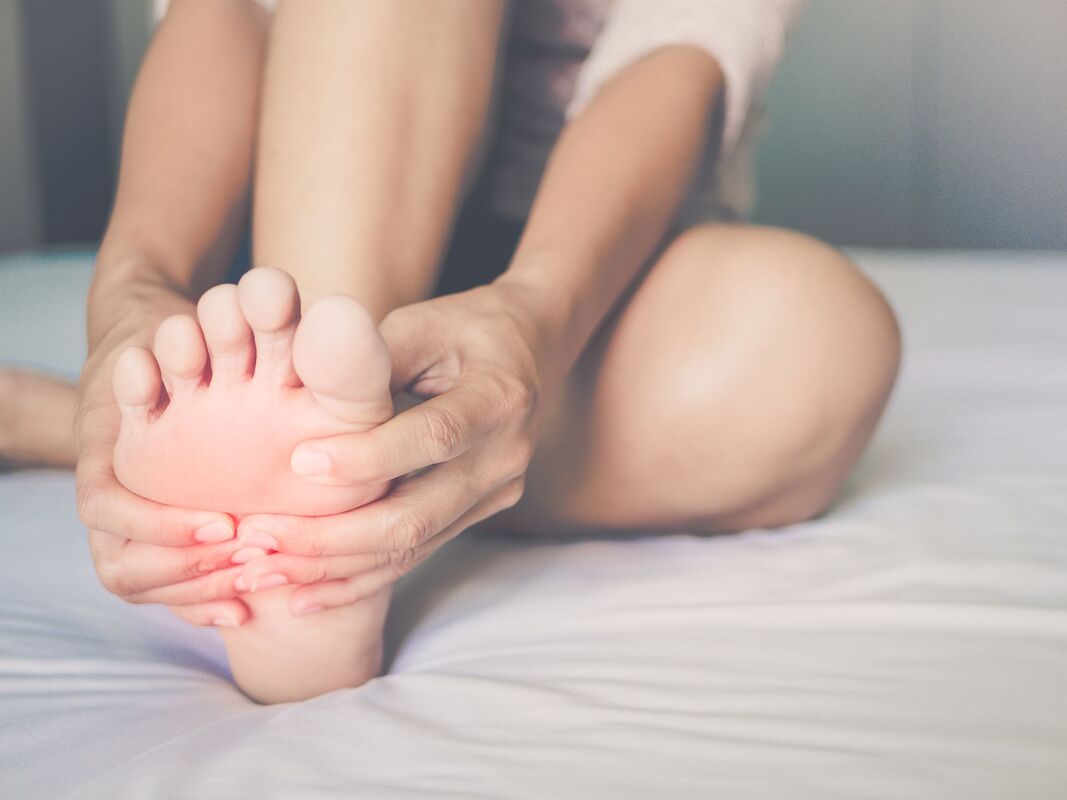If a patient has low back pain, would an orthopedist ever recommend wearing a back brace any time the patient is standing? Of course not. Why not? Is it because it wouldn't work? No. In the short-term it would relieve pain in many cases. However, medical professionals don't recommend this course of action because we know that, in the long-term, it would lead to increased atrophy of the postural muscles that naturally support the low back.
So, why do we take that approach with feet? Supportive shoes, inserts, custom orthotics--they are all doing for the feet what a back brace would do to low back postural muscles. All of these artificial support structures do the work that foot muscles would normally do. Atrophy / weakness is the unfortunate natural consequence. Look no further than your oldest relative's feet if you would like to see evidence of what a lifetime of wearing shoes will do to you. Compare their feet to the shape of the shoes they most often wear. You'll see that their foot has conformed to the shape of the shoe in the same way that foot-binding practices have deformed feet in China for centuries. Better yet, try comparing the feet of that oldest relative (or your own feet) to the feet of your youngest relative--the one who has worn shoes the least. That is, if you can even get that oldest relative to take off their shoes. Many elderly people have become so dependent on the artificial, external bracing of shoes that they only remove them for bathing and sleep. For some people I've worked with, decades of increasing support have led to such weak feet that they almost feel like a bag of bones. For these individuals, standing in a shower, on a hard surface, without their shoes and orthotics is the most painful thing they do on a regular basis. A lifetime of traditional, supportive shoes frequently comes with a host of problems. It often starts with plantar fasciitis or mild bunions and gradually worsens into conditions that can require surgery. That's the route that I've seen countless people take in nearly 20 years of working professionally with people's feet. There is another way. Feet can be strengthened and balanced if they're used more like our distant ancestors used them for millennia. In general, there are a few different paths we can take with our feet. 1. As feet become weaker and more painful in response to the atrophy caused by shoes, we can try to add increasing amounts of support which will result in more atrophy and over the decades may eventually require surgical interventions. 2. When feet already have enough imbalance that pain is interfering with daily functioning, a short-term intervention like a more supportive shoe, insert or custom orthotic may be useful or even necessary to get a patient out of pain. However, this can almost always be done at the same time as a foot strengthening and rebalancing program. This way, the patient can gradually get out of the orthotics, inserts or supportive shoes and into footwear that doesn't interfere with natural foot functionality. 3. Or, we can decide to minimize--and even eliminate--our use of traditional shoes. When we do need to wear shoes, we can choose to gradually transition into a barefoot-style shoe that allows for natural foot movement in all directions. Options like Vibram 5-fingers, Vivobarefoot, Softstar Shoes, or (Colorado's own) Xeroshoes.com have a broad variety of options. From dress shoes to hiking boots, from sneakers to snow protection, you can now find any type of shoe you need in a barefoot style. My personal favorites are the KSO (Keep Stuff Out) models that Vibram makes and the sandals that are sold on Xeroshoes.com. A gradual transition into these shoes could involve wearing them for one hour more of normal activity per day. For more intensive exercise like running in barefoot-style shoes, you may want to consider doing Vibram's foot strengthening program over a three to four month period. Personally, wearing barefoot-style shoes has been transformative for me. Before going barefoot, I was limited to doing a maximum of six hours of massage per day. Even that amount of massage frequently resulted in discomfort in my feet, low back, neck and shoulders by the end of the day. I could only practice good posture in the moments I was completely focused on it. Even the best quality, regular shoes were leading to weight-bearing through the outer heel area. I knew that my weight should be on a spot I like to call "the bubbling well." This is the English translation from the Chinese for acupressure point found there. It's towards the center of the transverse arch, just behind the balls of the feet. I could shift my weight there when I focused on it, but as soon as I focused on something else, my weight would immediately shift back to the outer heel. That's just what happens in a regular shoe. This shift led to more locked knees, tilting my pelvis forward, rounding my shoulders, holding my head forward and clenching my jaw. No wonder I had discomfort after those six hours of massage! With barefoot-style shoes, I'm limited by the number of hours in a day to how much massage I can do, instead of being limited by my body. I've done over 9 hours of massage spread over a 12+ hour shift and while I definitely feel tired afterwards, I am free from aches and pains I used to feel. Instead, I feel ready to do it again the next day. How could a transition to a barefoot-style shoe change your body and your life? What musculoskeletal problems could it help you resolve? Schedule a ReZults Massage today to start on a path towards healthier, stronger, and more balanced feet! Comments are closed.
|
Archives
June 2021
Categories |
Location |


 RSS Feed
RSS Feed